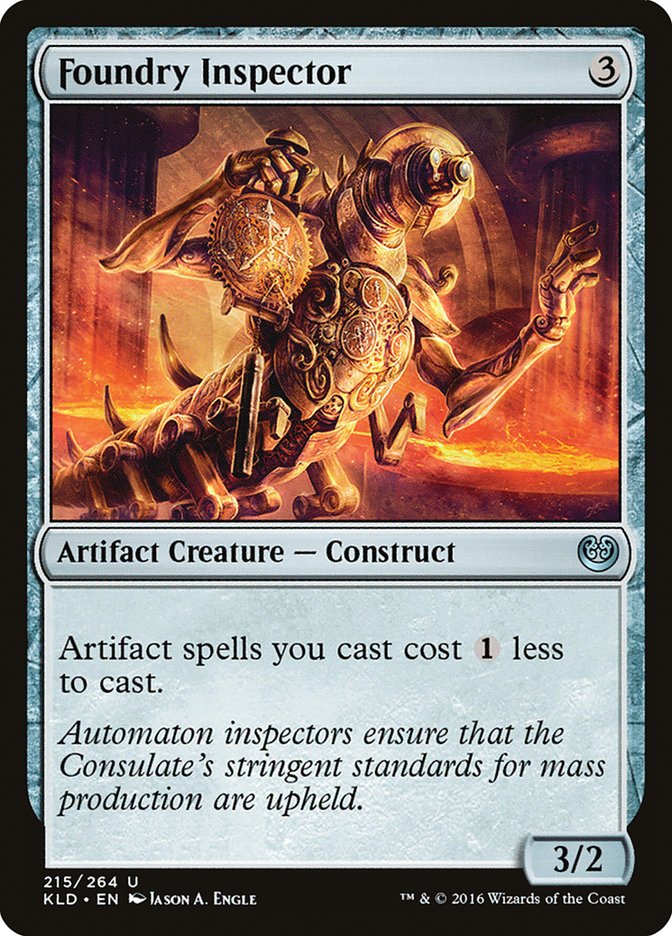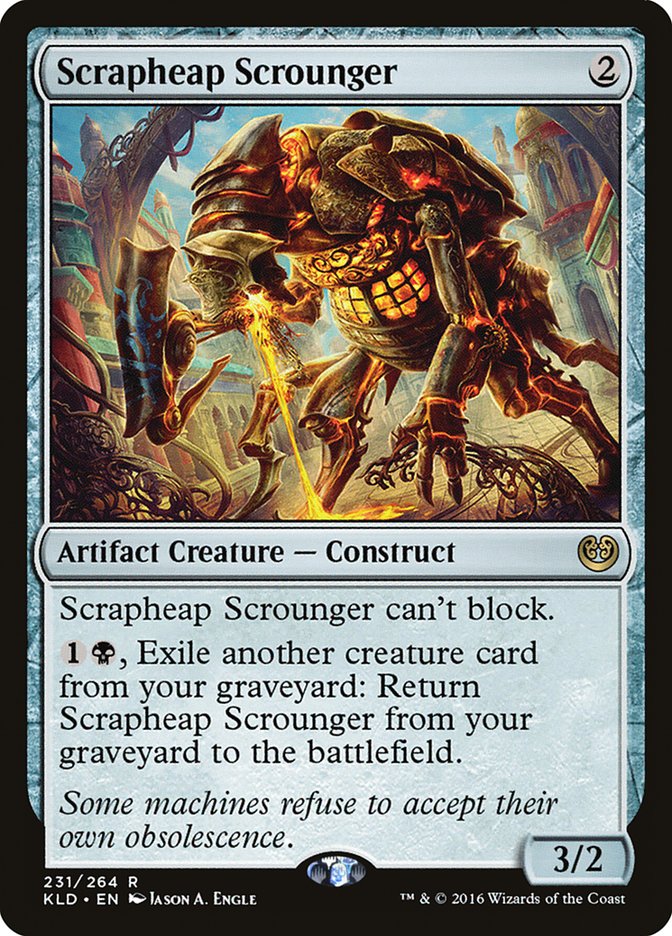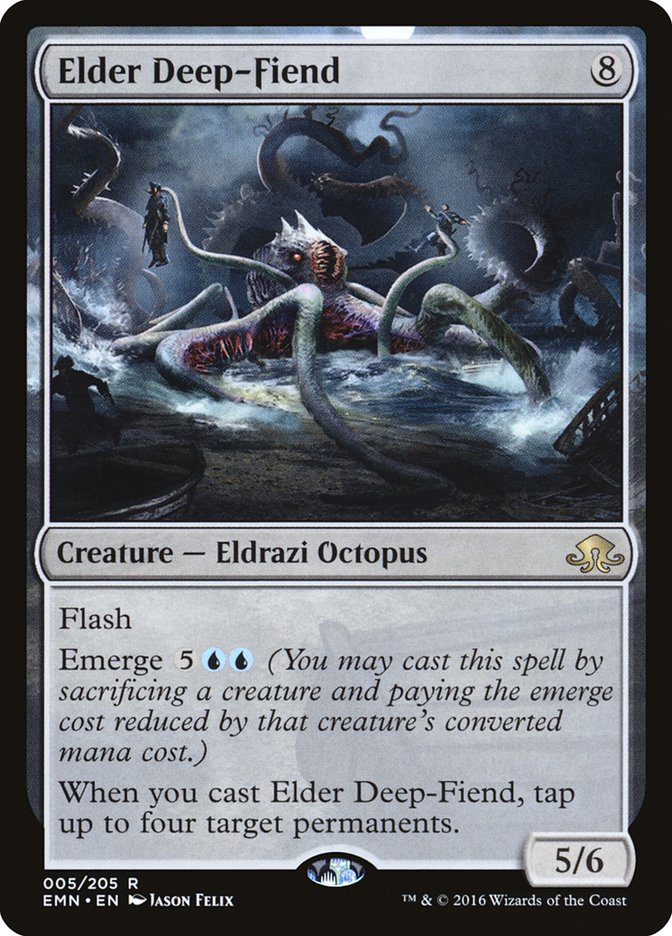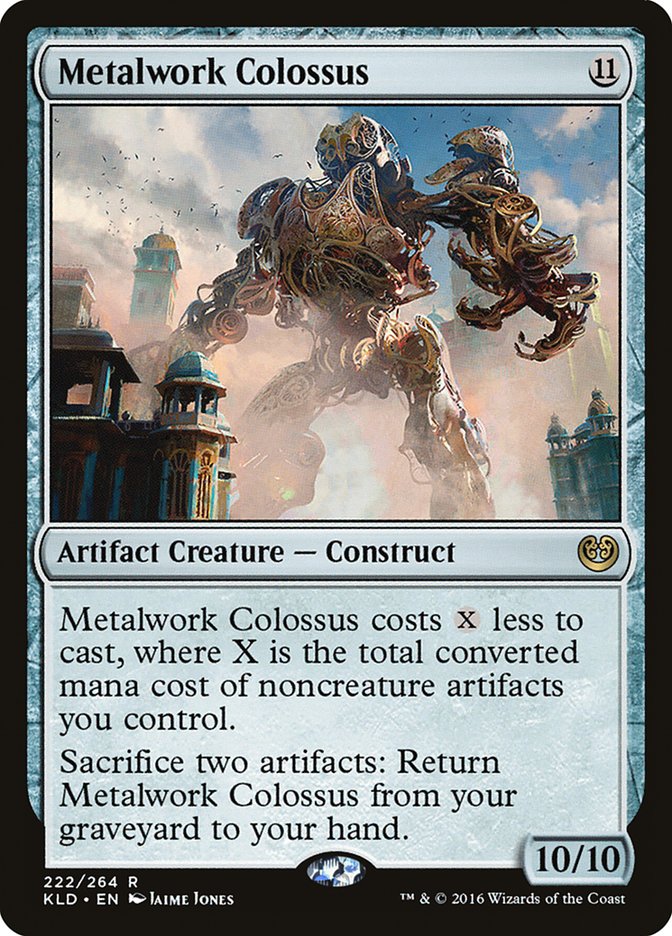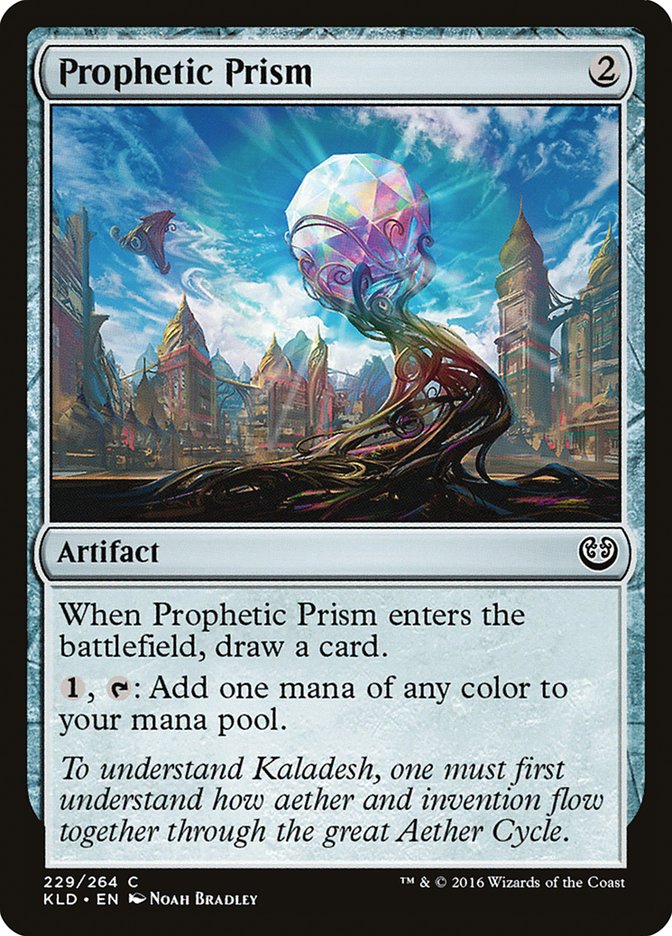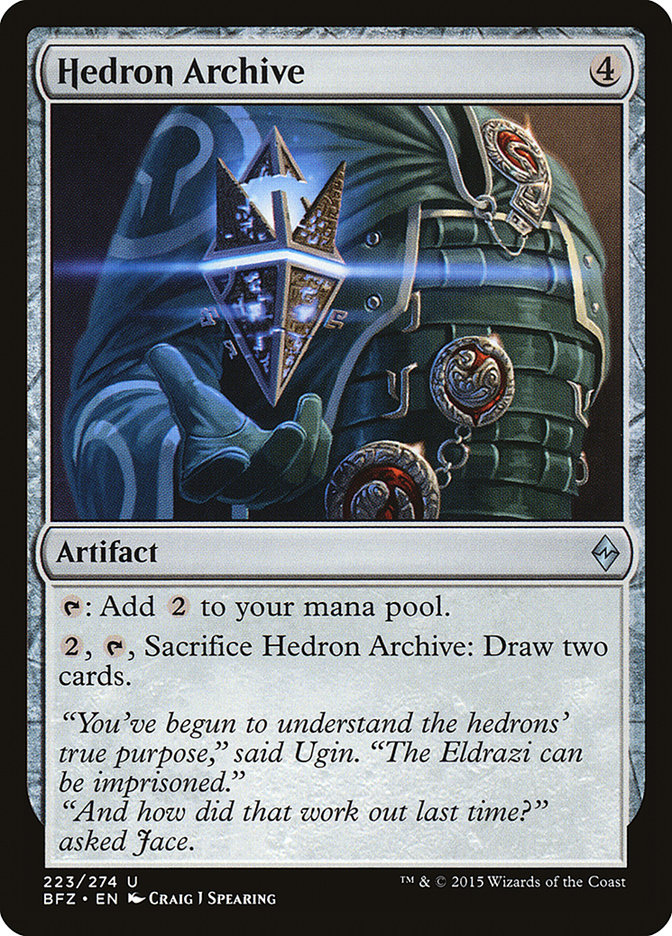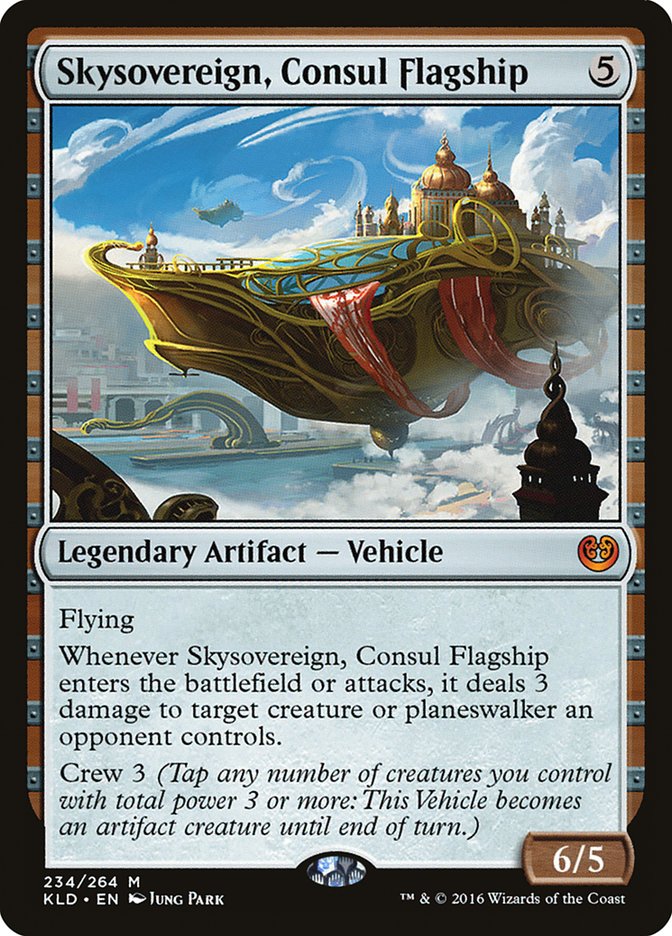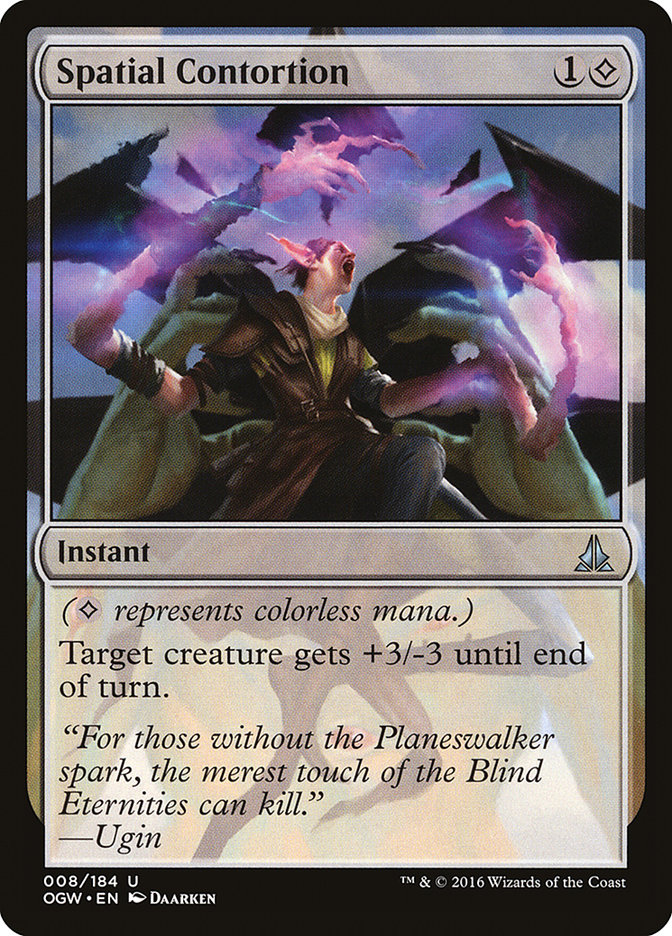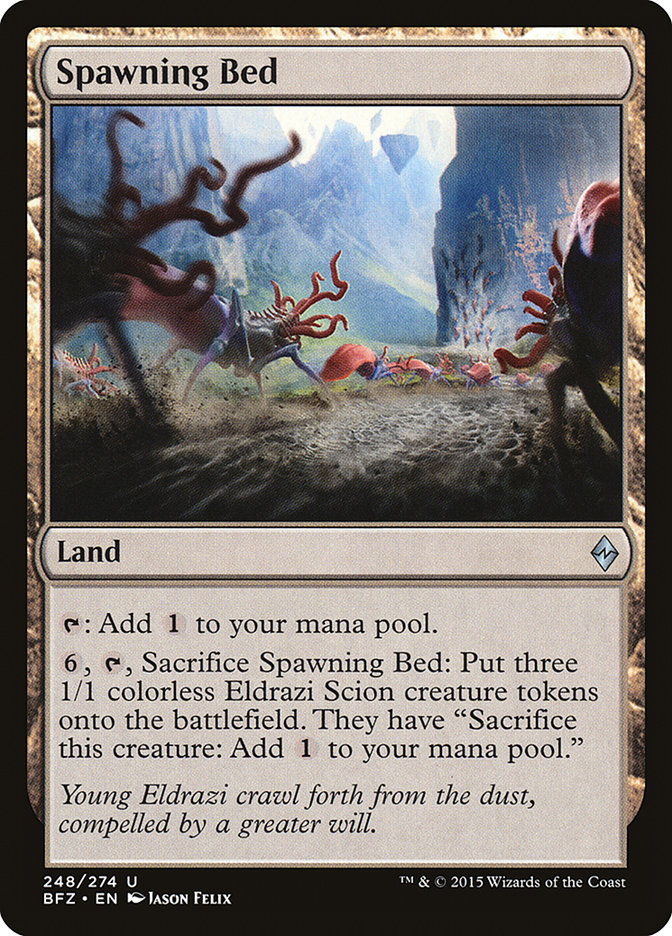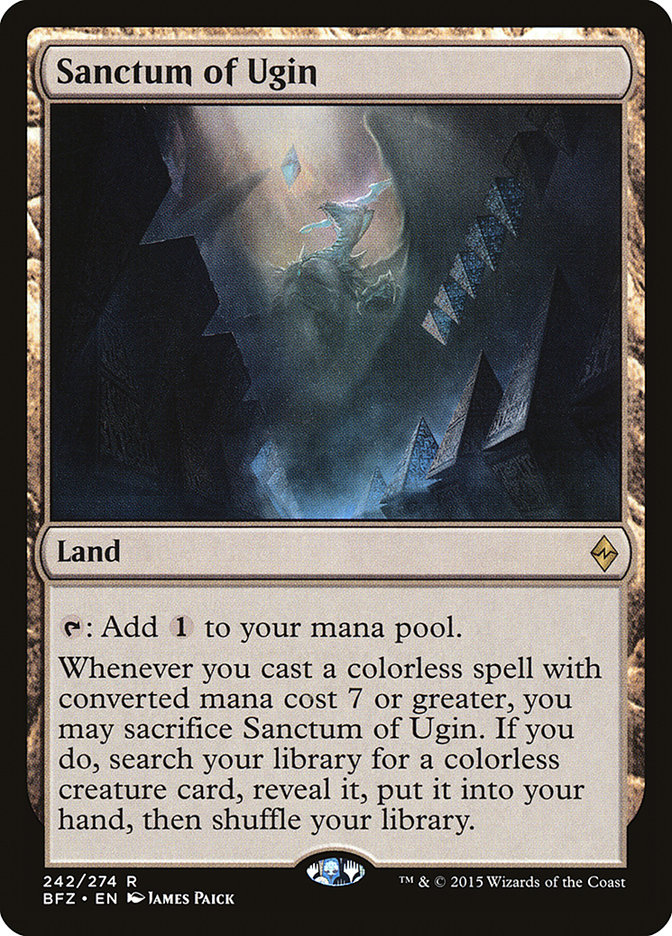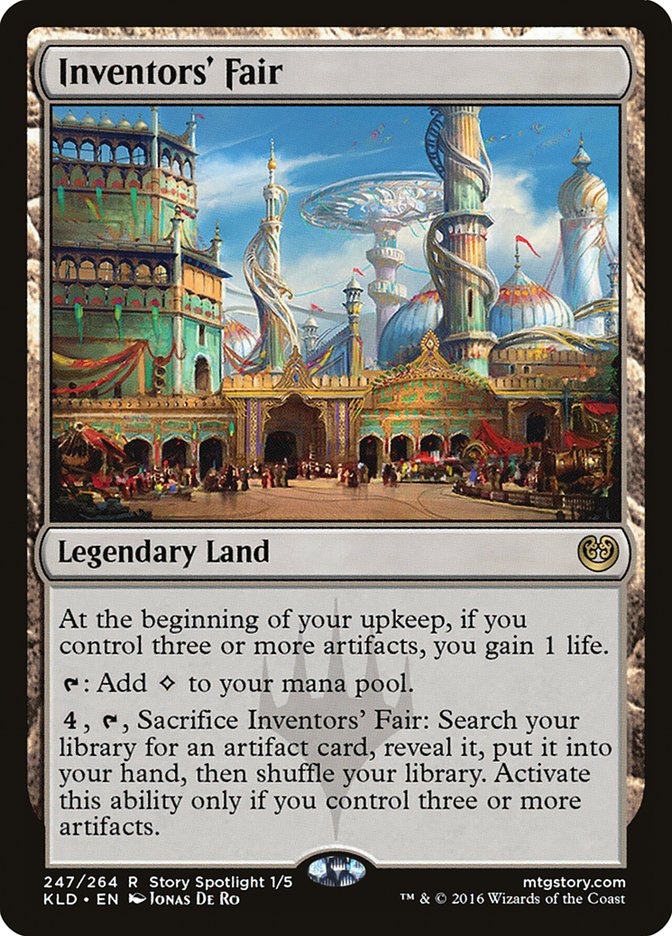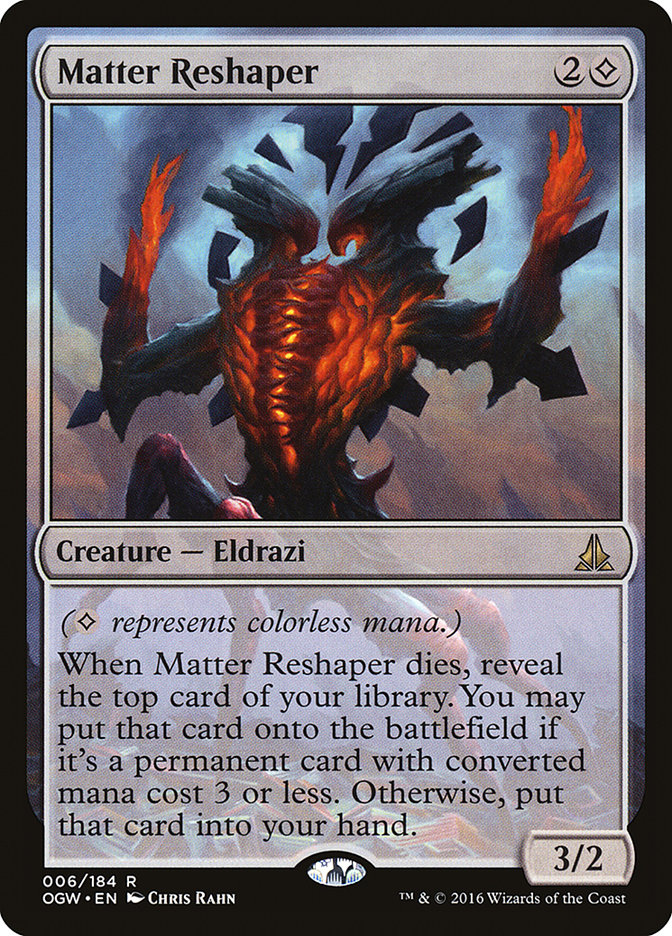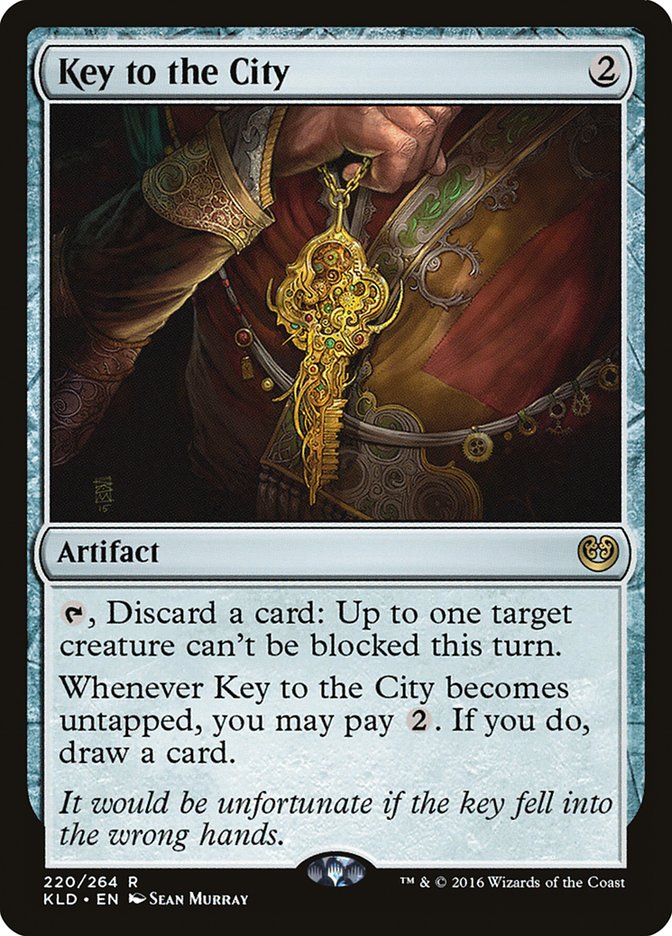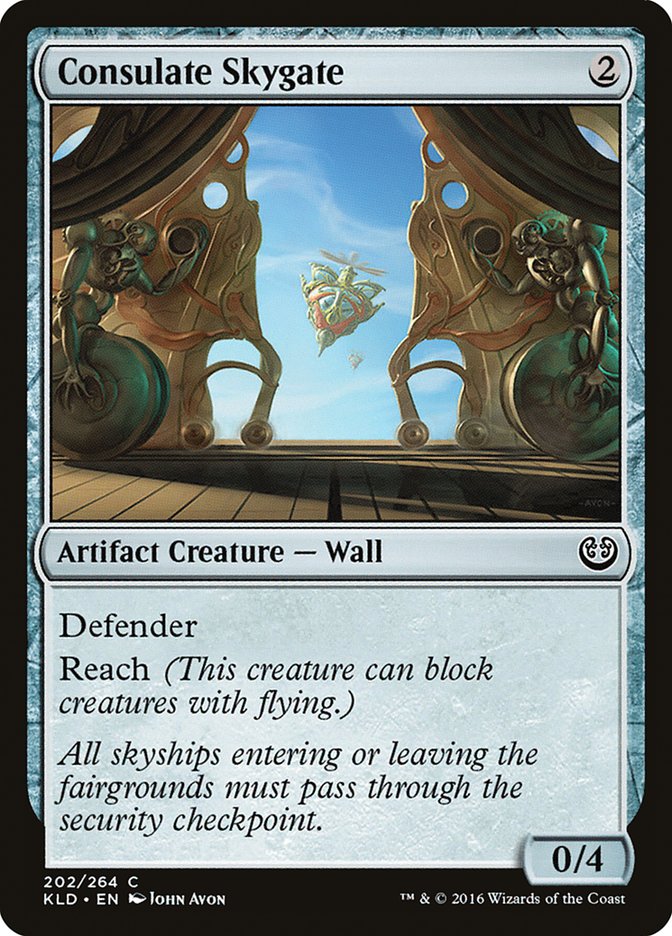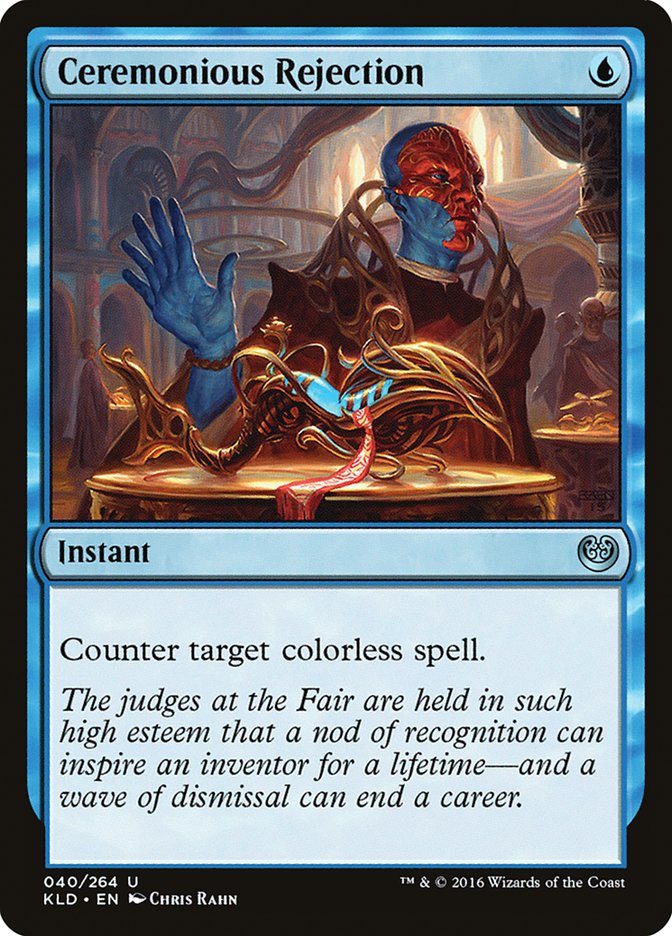Rotation is great.
Sure, it means losing a bunch of my old favorite cards, but getting to sink my teeth into something fresh is always so exciting. Unfortunately there’s a teensy-weensy detail that contradicts this: compared to my peers, I’m a horrid deckbuilder. Coming up with an entire strategy and finding out what is good enough to build around is not where my strength lies.
I’m better at tuning archetypes, finding the proverbial cracks in the armor and shoring up weaknesses that decks may have. Most of my contributions in deckbuilding are jumping from deck to deck, pointing out when removal spells don’t line up positively with general sizing of threats in the format or discussing sideboards. Towards the end of testing, I’ll submit miniature articles or essays of input on archetypes or what I know will or won’t work.
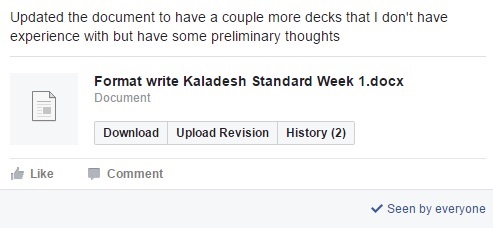
For a majority of formats, there tend to be decks that stand head-and-shoulders above the rest of archetypes and have a fantastic win-rate against the rest of the decks in the gauntlet. The U/W Humans deck I played shortly after the release of Shadows over Innistrad was a prime example:
Creatures (31)
- 4 Knight of the White Orchid
- 4 Dragon Hunter
- 3 Kytheon, Hero of Akros
- 2 Archangel of Tithes
- 4 Consul's Lieutenant
- 3 Expedition Envoy
- 3 Reflector Mage
- 4 Thraben Inspector
- 4 Thalia's Lieutenant
Lands (22)
Spells (7)

Despite the deck looking relatively boring, the archetype had a roughly 65% win-rate against the playtesting gauntlet, and my results in the tournament were indicative of it.
Figuring this format out isn’t nearly as cut-and-dried. Next Ridge Nexus quickly determined that we didn’t have enough people to test all of the decks that we thought had merit, so John Cuvelier, Jadine Klomparens, and Josh Martinez were brought onboard to help with the process.
After a lot of work from Brennan DeCandio and Jadine Klomparens, what would eventually come to be the Nexus Metalwork Colossus deck came to be:
Creatures (16)
Lands (23)
Spells (21)

Creatures (16)
Lands (24)
Spells (20)

Despite our decks being approximately twenty cards off from one another, the core components of the deck remained intact between us.
I’m generally quite opposed to “deck tech”-styled articles, but this deck has several different directions that it can go and a large number of synergies that may not be noticeable at a glance.
The first thing that needs to be addressed is that Metalwork Colossus is a super-cool and flashy enabler. What this deck tends to actually win with is a combination of Elder Deep-Fiend and Vehicles. Metalwork Colossus just so happens to be a creature that synergizes well with this.
Foundry Inspector is one of the more dangerous cards in the deck. Untapping with a three-mana two-toughness creature may be a tall order, but the busted turns that can come through this card, allowing its controller to chain mana rocks, can be absolutely absurd.
There were phases in testing where this card was Herald of Kozilek. Despite Herald being a better card, it is unable to Crew Vehicles as well as Foundry Inspector. The colored mana in Herald of Kozilek’s mana cost is also a very real detriment that ended up being a little too awkward in a number of games. Inspector dying to the front half of a Kozilek’s Return is pretty embarrassing (and lost me the first game of the entire tournament), but not being able to cast a mana-reducing three-drop until turn 5 is even worse.
Scrounger effectively serves the role of Most Valuable Pilot; it very rarely does any attacking of its own (past the third or fourth turn) and can eat multiple removal spells before being gone for good.
I’ve waffled between two and three copies of the Scrounger throughout testing and I’m frankly still unsure of which is correct. This deck really wants to draw a single copy every game, and the second copy is pretty close to dead. Getting outsized as the game progresses is a serious concern, but turning on Cultivator’s Caravan and Skysovereign, Consul Flagship are also very serious concerns.
Mistbind Clique is just as good as it’s always been; Elder Deep-Fiend is even better. The “chain” in this deck (calling it a combo feels loose) is casting a heavily discounted Metalwork Colossus, (sacrificing Sanctum of Ugin for Elder Deep-Fiend,) sacrificing the Colossus to make Elder Deep-Fiend cost UU, tapping the opponent’s resources, and finally recurring the Colossus with its second ability to continue applying pressure.
Elder-Deep Fiend’s synergy in the deck doesn’t stop there. The emerge mechanic is a benefit when getting rid of excess Vehicles (when they can be Crewed, but can’t all be Crewed simultaneously), making use of the built-in recursion of Scrapheap Scrounger, and putting other creatures in the graveyard (read: Glint-Nest Crane) to upgrade a possible attacker via Scrapheap Scroungers that otherwise lack food.
In games where the Colossus player is ahead, Elder-Deep Fiend closes the door, and in games that are close, Elder-Deep Fiend works as a pseudo-Falter effect to push through the last few points of damage.
This card does everything. Understanding why this card is good (in this deck) is similar to explaining why delve spells are powerful. Delve spells tend to be broken because they are used in a way that doesn’t actually require a deckbuilding sacrifice to make them powerful. Delve spell just reward their casters for playing Magic. Magic that sometimes has a card that used to be a five-mana sorcery being cast as a two-mana instant. Metalwork Colossus is in a similar vein here. There are games that are won without a Metalwork Colossus having even been drawn, cast, or discarded. There are other (much easier games) in which Metalwork Colossus is cast for zero mana on the fourth turn of the game because of a curve that involved casting eleven mana worth of artifacts on the first few turns.
“How is Metalwork Colossus ever getting through? This deck doesn’t play anything like Key to the City to give it evasion!”
To reiterate what I brushed on before, Metalwork Colossus is very rarely attacking. It is usually driving a Skysovereign, Consul Flagship before an Elder Deep-Fiend emerges out of it the following turn. The games in which Colossus does have the opportunity to attack tend to be over quickly, but planning for the landslide games is hardly a reasonable use of one’s time.
Both of these cantrips are effectively cards that are played almost solely with the Colossus in mind. They are the weakest cards in the deck, yet play a vital role. Prophetic Prism’s mana fixing comes up quite often as well with double-digit numbers of colorless sources and Elder-Deep Fiend being cast as early as turn 4. Metalspinner’s Puzzleknot is something that Brennan swears by, but for me the jury is still out. In that place I’m playing….
Similar to Metalwork Colossus, Smuggler’s Copter doesn’t do anything in this deck particularly well (or often), but it barely does several things. The deck currently has eleven different creatures that can Crew a turn 2 Copter, which isn’t the best place to be but is reasonable.
Part of the value of Smuggler’s Copter is in the way that it almost serves as an Equipment for Glint-Nest Crane later in the game. Despite being the best card in the deck, the Crane doesn’t size well against opposing Archangel Avacyn, Spell Quellers, and so forth. Having a way to make Glint-Nest Crane Crew Skysovereign or Cultivator’s Caravan (by first getting in the chopper) is something that comes up a good portion of the time.
At the heart of everything, this is a ramp-ish midrange deck that utilizes noncreature artifacts. Adding some number of Hedron Archive to the deck is relatively intuitive.
Towards the beginning of the weekend I would joke that Wizards of the Coast finally printed a playable Darksteel Ingot variant. As the weekend progressed, I stopped joking about this card. Cultivator’s Caravan is the real deal. In many games Caravan serves as a 5/5 for three that can’t be killed via sorcery-speed (creature) removal. Caravan likely dealt more damage over the course of the weekend than any other card in the deck. Do not underestimate this card; it is very likely that it will see serious play throughout its residency in Standard.
Like most cards in this deck, Skysovereign does a lot. It kills planeswalkers, it comfortably attacks into Archangel Avacyn mana, it shoots down little creatures, it has an ability that triggers when it enters the battlefield, and it blocks Smuggler’s Copter; it’s basically the big box of crayons, the one with the built-in sharpener.
While decks need to be built with Skysovereign in mind, this card is an absolute powerhouse if its owner ever has the opportunity to untap with it. It is very hard to lose with an active copy of Skysovereign, Consul Flagship under your control.
The matchups that give this deck the most trouble are easily the creature-based aggressive decks. Maindecking the full playset of Spatial Contortions is a concession to those matchups while also recognizing the corner-case scenarios in which Spatial Contortion can do an impression of a burn spell by pumping any of the larger threats in the deck.
In deckbuilding I tend to slant towards overloading on anti-aggro cards as opposed to anti-control cards (when deciding what cards will be in the sideboard and which ones will end up in the maindeck). The reason for this is relatively elementary in thinking: you don’t have time to draw cards against aggressive strategies. Against slower midrange or control decks, there is time to try to find haymakers that can be hard to answer to take over a game by themselves. Against aggressive decks, if the opponent is planning to have you dead on the fourth turn, that only gives you the top ten cards of your library; those aren’t great odds for somebody that elected to maindeck fewer removal spells or sources of lifegain.
Both of these are just utility lands that this deck has the opportunity to play due to the low cost of having lands that don’t tap for colored mana. Over 50% of the spells in Brennan’s and my variations don’t require colored mana, and we both have four copies each of Prophetic Prism and Cultivator’s Caravan. Sanitarium ends up being used a bit more than Spawning Bed (by virtue of having a significantly lower activation cost) but the drawback of being legendary is a serious cost in this deck.
A good bit of the deck’s strength is in the fact that a quarter of its lands are tutors. The deck is incredibly consistent due to the high levels of recursion, redundancy, and the depth of different chains that cards can lead to. One particular game against an aggressive strategy, I had a relatively anemic draw that ended up being incredibly powerful against an aggressive strategy with a creature-like draw:
Turn 1: Sanctum of Ugin
Turn 2: Island, Prophetic Prism
Turn 3: Sanctum of Ugin, Foundry Inspector
Turn 4: Sanctum of Ugin; Skysovereign, Consul Flagship (trigger to kill their creature)
Turn 5: Inventors’ Fair, Cultivator’s Caravan (tapping two Sanctum of Ugin), cast Metalwork Colossus for free, sacrifice all three Sanctum of Ugins for two Metalwork Colossus and an Elder Deep-Fiend, cast the Metalwork Colossuses, crew Skysovereign, attack for six and kill another creature. On the opponent’s turn, emerge Elder Deep-Fiend and tap all of the opponent’s lands.
This is obviously an extreme example, but the spell-lands fulfill a role similar to Hedron Archive in ramp decks of seasons past, setting up early and digging for threats later.
The Matchups
A good portion of the deck’s strength lies in its resiliency against removal. Removal spells that don’t exile creatures aren’t good enough. Metalwork Colossus is very big and can just recur itself; Scrapheap Scrounger brings itself back from the graveyard; Vehicles’ built-in abilities provide value that makes the removal spells’ caster fall behind over time. It’s very difficult for decks to go over the top of never-ending zero-mana 10/10s, utility lands, and multi-functional cards. This deck is very capable of racing Ulamog, the Ceaseless Hunger and outsizes creatures that aren’t Eldrazi titans.
The deck’s worst matchups are unfortunately quite popular. The deck needs a major overhaul in order to compete with R/W Vehicles, and Emrakul, the Promised End is lights-out for this deck if she isn’t immediately answered (as in, before the turn she allows her caster to take control of.).
Emrakul, the Promised End creates a miserable situation for anyone who takes advantage of Metalwork Colossus. The controller of Emrakul can force Metalwork Colossus to chump-attack into the Eldritch Moon herself and then sacrifice two artifacts to recur the Colossus, retain priority, sacrifice two more artifacts to activate the recursion ability again, and so forth until either all of or all but one of the Colossus’s owner’s artifacts have been sacrificed. This doesn’t even go into detail on all the different ways this deck tutors for specific cards (and by that I mean “fails to find specific kinds of card when there is a sudden Emrakul-fueled change of heart”).
Fixing the Bad Matchups
Things aren’t as grim as they sound. Overall the Emrakul decks tend to have a problem against the Metalwork Colossus deck due to the Colossus deck’s ability to apply large amounts of pressure with little notice. It’s hard to calculate which turn(s) to Elder Deep-Fiend the artifact deck, and guessing wrong can equate to a near-instant game loss. Sideboarding to mitigate Emrakul’s impact is something to keep in mind, but avoid diluting the deck too much; after all, it is a deck based around a specific engine and this deck is marginally more consistent (and about a turn to a half-turn faster). Thought-Knot Seer plays an enormous role in putting Emrakul where she belongs: removed from the game exile.
R/W Vehicles is a little trickier, but understanding the problem cards goes a long way. The biggest issue that I’ve had with the deck is when there are Smuggler’s Copters that are bigger than a 3/3. Blocking the Copter is possible (with a Copter), and killing it with Spatial Contortion is also an option, but neither of these are possible if the Copter begins to outsize both of these counterbalances that have been put in place.
The next step in my testing is to try adding Natural State to the sideboard as a way to answer both Smuggler’s Copter and Stasis Snare the turn they are cast (and in response to the triggered ability of the latter). I overestimated how difficult it would be to maintain black mana for Scrapheap Scrounger when adding Sunken Hollow to my deck; Botanical Sanctum replaces the Sunken Hollow and enters the battlefield untapped on turns that are more crucial to have untapped land drops than Sunken Hollow.
Changing out other under-performing sideboard cards is a natural state in the never-ending playtesting process; honing in on the deck’s problems is much easier with an entire tournament’s worth of data to review.
Creatures (17)
Lands (23)
Spells (20)

To summarize the changes in as few words as possible:
Matter Reshaper tended to overperform (compared to Filigree Familiar) and being able to Crew Vehicles over Kitchen Simulacrum (half Kitchen Finks, half Solemn Simulacrum) gives Matter Reshaper the nod. I was very rarely disappointed to see Reshaper and was never excited to draw Filigree Familiar.
There were multiple times I missed this card from Brennan’s build of the deck. Key to the City provides a way for Inventors’ Fair to turn into an evasion spell for Metalwork Colossus to punch through something like Ishkanah, Grafwidow or a similarly gummed-up battlefield.
This card blocks everything and ends up gaining eight to ten life over the course of a game. If it ends up eating a removal spell instead, that’s just gravy.
Did you know this card can counter Transgress the Mind? Very few of my opponents realized it before it happened. This card wins games by itself against the varying Emerge archetypes (it is almost always correct to counter the three-drop artifact creature to prevent them from emerging) and a small number of these are correct against the aggressive Bomat Courier/Vehicle decks.
The Red Splash
Brennan is still sold on his red splash from the weekend, but I need a bit more convincing before I stop trying out other combinations.
Creatures (16)
Lands (23)
Spells (21)

Brennan was incredibly fond of Incendiary Sabotage but wants to make room for Harnessed Lightning in the sideboard, shaving copies of Negate, Aether Meltdown, and Incendiary Sabotage for the full playset of the red spell. With a larger shift to red, the fourth Spirebluff Canal is moved into the deck over an Island (due to Prophetic Prism coming out against a high number of aggressive decks). Otherwise, Brennan is happy with the current maindeck configuration and wants to keep it as-is for further testing.
Wrap-Up
I’m not usually one to do this, but I’d love input from readers on this. With so much mana fixing and so many ways mana could be splashed into the deck, it’s hard to cover everything that could go into the deck. Have we missed something? Is there a card you’d like to see tried in the deck or hear about how it may have already done? Feedback is always appreciated, and there are dozens of angles to explore for this.
I’ll be at Grand Prix Atlanta this weekend, playing Commander and meeting all kinds of wonderful people that make my life possible. Make sure to say hi if you’re in the area or want to chat! I’d love to play Magic with just about anyone and will be bringing several different Commander decks for varying levels of competition in the format. It’s going to be a blast, and I’d love to meet as many people as possible!


